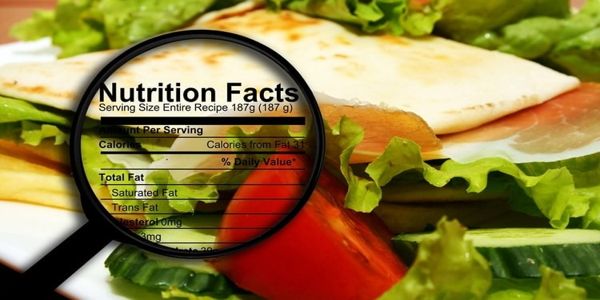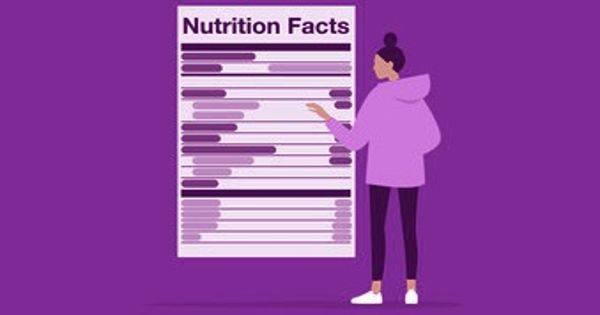Food labeling is one of the most important aspects of any food-related industry. Aside from transparency, it enables people to determine, select, and maintain their dietary needs and health plans.
Nutrition labels describe the nutrient content of food and are intended to assist consumers in making food choices. The nutrition information provided must be chosen in accordance with dietary recommendations. The specific nutrients or food components to be listed should also take label space, analytical feasibility of measuring the specific nutritional component within the food matrix, and the relative costs of such analyses into account.
According to researchers, when retailers display clear nutritional information on their own-brand food products, households eat more healthily. According to new research, prominently displayed nutritional information on food products that provides consumers with information on salt, sugar, and calorie content plays a significant role in nudging people towards better dietary choices.
The study, conducted by health economists at the universities of Bath and Bristol and published in the Journal of Health Economics, is the first to assess the impact of Front-of-Pack nutritional labeling on retailer-branded products since its implementation in 2006.
Nutritional information displayed prominently on food products which give consumers information on salt, sugar, and calorie content play a significant role in nudging people towards better dietary choices, according to new research.
Their findings show a decrease in the amount of labeled store-branded food purchased (for example, ready meals, pizzas, burgers, and so on) and an overall improvement in the nutritional composition of consumers’ shopping baskets where labeling was displayed. Notably, these improvements in food shopping habits were most noticeable in poorer households.
The UK Food Standards Agency (FSA) recommended in 2006 that retailers implement Front-of-Pack (FOP) labeling on seven types of foods (ready meals, burgers/sausages, pies, breaded/coated meats, pizzas, sandwiches, and cereal). Several UK retailers (Waitrose, Co-Op, Marks & Spencer, and Asda) adopted the recommendation, introducing it at different times between March 2006 and September 2007.
Retailers implemented two kinds of nutritional labeling. Some introduced a Traffic Light System, a color-coded scheme that denoted the number of nutrients by the colors red (high), amber (medium), and green (low), whereas others introduced a hybrid system that incorporated both a traffic light system and Guideline Daily Amounts (GDAs), where both colors and the contribution that each of these nutrients makes towards the adult GDA were displayed.

Label nutrition information should be accurate and not mislead consumers. Simultaneously, labeling regulations should provide manufacturers with incentives to develop products that promote public health and assist consumers in adhering to dietary recommendations. It is likely that some segments of the population in many countries would benefit from information about food composition.
By drawing on differences observed in the food choices of consumers who shopped in stores where labelling was displayed, to changes for consumers shopping elsewhere, the results from the new study show that on average, as a result of labelling, households improved the quality of their diet by reducing the total monthly calories from labelled store-brand foods by 588 Kcal, saturated fats by 14g, sugars by 7g, and sodium by 0.8mg. Hybrid labelling was found to be most effective at shifting choices.
The findings come as the UK government unveils its new obesity strategy in response to Covid-19, which includes a number of measures such as menu calorie labeling to help people make healthier choices when eating out. According to the study’s authors, the new findings can help shape future policies in this area.
“Our results suggest that nutritional labeling on food products can play an important role in starting to shift behaviors towards healthier food choices, whether that be during the weekly shop in a supermarket, or potentially through new healthier menu choice options,” explains lead researcher Dr. Eleonora Fichera from the Department of Economics at the University of Bath. Labeling has a dual effect in that it not only better informs consumers about the nutritional value of the products they put in their shopping cart, but it may also incentivize manufacturers to produce higher-quality food products.
“Of course, this is not a panacea for the obesity problem, which is multifaceted and requires a much more systemic approach. However, these findings provide policymakers with additional evidence that such measures can make a significant contribution.”
The Food and Drug Administration (FDA) has established proper guidelines for food labeling in accordance with the Federal Food, Drug, and Cosmetic Act. The main rule is simple: all nutritional values for all prepared and packed food items, including bread, canned products, frozen items, cereals, snacks, drinks, desserts, and so on, should be listed. The FDA also provides regular guidance to the food industry for any addition or deletion of information in the labeling, depending upon the nature of the item.
















